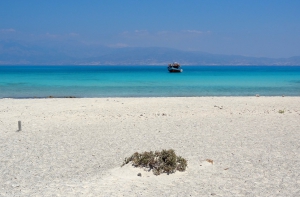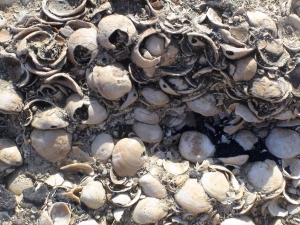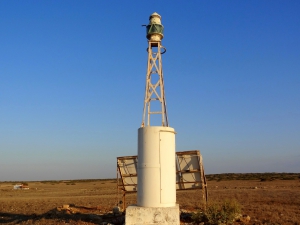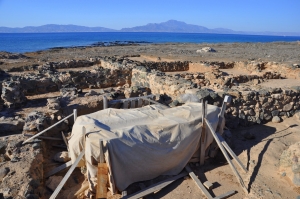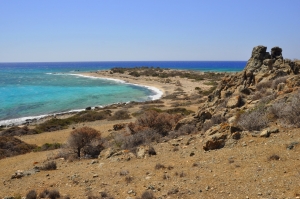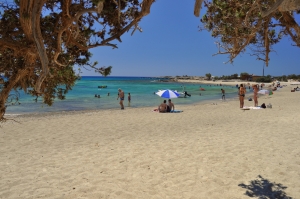The thousands of visitors arriving daily by boat from Ierapetra to Chrissi island mainly swim on the beach of Belegrina or Golden Beach. Bright blue waters, white sand with pink shades from the thousands of broken shells, and the junipers that hold the sand with their huge roots are the backdrop that makes anyone fall in love with this place.
Chrissi can be considered a paradise for geology enthusiasts. One of the most spectacular geological sights of the island can be seen east of Belerinina beach, where you will meet thousands of fossils, mainly bivalves. The fossils form a so-called thanatocoenosis, that is, dead shells that have been gathered there by the streams and have fossilized over time.
At the west part of Chrissi islet you will meet the small lighthouse, powered by photovoltaic panel. The lighthouse is located close to the small chapel of Agios Nikolaos (Saint Nicholas) and the dried lake of the island.
Approximately 500m west of the main harbor Chrissi island, approximately in the middle of the southern side of the island, a dirt road leads us to the beautiful Vlychadia beach. The beach has black and red chalk that comes from red lava, while the bottom is mainly rocky.
An important settlement of the Minoan and Roman period has been found in the island Chrysea of ancient Greeks, the present island of Chrissi or Gaidouronisi. Buildings and at least three carved tombs have been identified near the church of Agios Nikolaos and the lighthouse on the island. The settlement was probably used for the production of Tyrian purple from the shells of Murex brandaris, exactly like the neighboring isle of Koufonissi.
At the eastern end of the island of Chrissi lies the beautiful beach of Kataprosopo (=face to face), which faces the island of Mikronissi. Mikronissi is a great refuge for marine avifauna. In fact, the beach is divided into two by a thin strip of rocky land, while the vegetation in juniper is clearly more limited than the other beaches of the eastern part of the island. The waters are shallow and do not exceed 5m to Micronissi, making it ideal for snorkelling.
At the western end of the long beach of Chatzivolakas on the island of Chrissi, we find the beach Avlaki. Avlaki has rocky seabed, like almost the whole island. At the end of the beach there is the second harbour of the island at position Spilios and the only house in Chrissi built in the middle of the 20th century. The name Spilios (cave) is taken after an old house built in the rock.
The position on the southern side of the island of Chryssi where the the boats carrying visitors from Ierapetra stop is called Vougiou Mati. To the west of the quay a small rocky bay is formed with small caves. On the east side of the quay, a long rocky beach is formed, which visitors prefer when the most popular beach of the island, Belegrina or Golden Beach in the north, is wavy.
- 1
- 2












